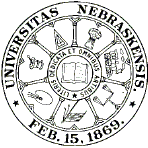
University Studies (University of Nebraska) (1888–1984)
Date of this Version
5-1960
Citation
University of Nebraska Studies: New Series No. 22
Abstract
The English novel traces its roots beyond the medieval romance, but it first began to assume recognizable form early in the eighteenth century with such books as Defoe's Robinson Crusoe, Roxanna, and Moll Flanders; Mrs. Behn's Oroonoko and Swift's Gulliver's Travels. It was not until mid-century, however, that it took on its fun lineaments in the works of Richardson, Fielding, Smollett, Sterne, and their followers. The first of these "true" novels, published on November 6, 1740, was Richardson's Pamela: or, Virtue Rewarded. Pamela caught on, enjoyed a great popular vogue, started several schools of fiction, and was directly responsible for a vast array of imitation, adaptation, burlesque, parody, translation, commendation, and vilification-in short, a veritable literary warfare.
Much of this story has been told elsewhere, notably in the scholarly biography by Alan Dugald McKillop and the bibliographical record by William Merritt Sale, Jr. But one aspect of this literary broadside has received scant attention-the criticism of Richardson's ethical outlook and artistic ability which is at the base of all the burlesque, parody, criticism, objection, and condemnation his novel evoked. It is true that a great deal has been written about Henry Fielding's Joseph Andrews, and his Shamela also has received a share of critical attention; but here the examination usually ends. .And while these two admittedly are the big guns of the anti-Pamela artillery, they represent only a small front of the attack.
In this study the anti· Pamela literature is examined, not as literature, but rather as it serves to illustrate a particular facet of the character of Richardson or of Pamela. Some consideration has been given to the various works as individual entities because their value as critiques of Pamela is in direct ratio to their degree of artistry, and because the validity of the argument-that is, the con· tent-can hardly be dissociated in toto from the manner in which it is presented. Their exposition of social patterns also is examined, both to help understand the period in which Pamela arose and to provide the context necessary for a proper evaluation of the novel and its detractors.


Comments
Published by the University at Lincoln